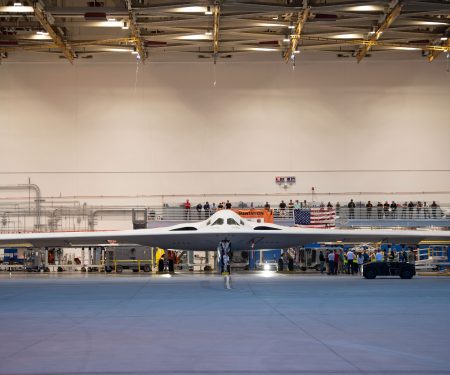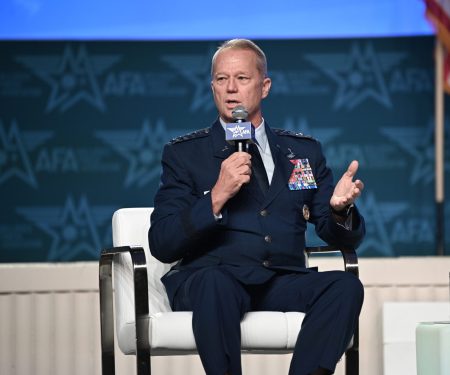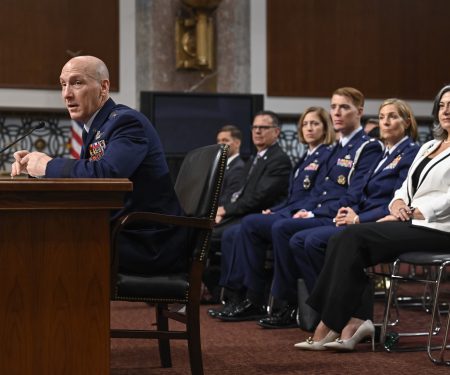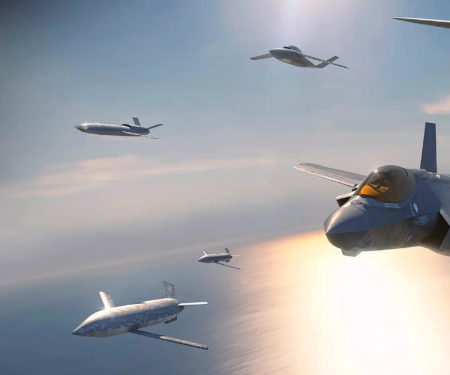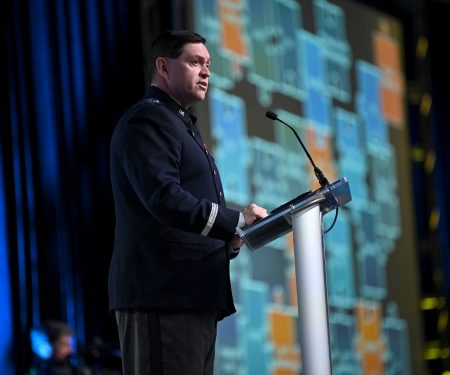CSAF Shows Off New Images of the B-21; Raider Begins Engine Runs
ACC Boss: Russia and China Are Intercepting USAF Aircraft as ‘Batting Practice’
At Nomination Hearing, Allvin Says Chance to Be CSAF ‘Comes at a Very Important Time’
Air Force ‘Very Opposed’ to Lawmakers’ Proposed Cost Limits for CCAs
Air Force Surgeon General: Better Access to Health Services Helps Force Readiness
‘Change Must Continue’: Brown Reflects on Time as Air Force Chief of Staff
Experts Talk Potential and Path Forward for Integrating AI Across the Air and Space Forces
Space Force Service Component for Europe and Africa Coming in December
Radar Sweep
Air Force Research Lab Explores Entanglement Distribution, a Key to Future Quantum Networks
As it moves deliberately to make game-changing strides in quantum information science—a buzzy, emerging field with big potential to enable revolutionary advances in computing power and information processing—Air Force Research Laboratory is now placing a sharper focus on entanglement distribution, which marks a key functionality of a quantum internet and large-scale quantum networks.
Air Force Creates Task Forces to Pilot Modern Deployments
The Air Force in fiscal 2024 will experiment with further changes to how it deploys airmen, service leaders announced at the Air and Space Forces Association’s annual Air, Space & Cyber Conference here this week. Air Force Secretary Frank Kendall said Sept. 11 the service is creating three “air task forces,” or packages of Airmen that the Air Force can offer to Pentagon planners to tackle crises around the world.
SPONSORED: SAIC Discusses Future of JADC2
Joe Sublousky, Vice President of JADC2 for SAIC, spoke to Air & Space Forces Magazine at the 2023 Air, Space & Cyber Conference about the future of air operations and JADC2.
China, Russia Will Use Cyber to Sow Chaos If War Starts, Pentagon Says
China and Russia are prepared to unleash a flurry of cyberattacks on U.S. critical infrastructure and defense networks should war break out, according to a Pentagon strategy unveiled this week. Such tactics, meant to sow chaos, divert precious resources and paralyze military mobilization, were observed in Eastern Europe during Russia’s invasion of neighboring Ukraine, a conflict that colors the Pentagon’s new 2023 Cyber Strategy. An unclassified summary of the document was made public Sept. 12.
Space Force Needs More Cyber Operators for Weapons Systems, Chief Says
Protecting weapons systems is a top concern for the U.S. Space Operations Command, but there aren’t enough cyber operators to monitor the myriad interconnected platforms. “We really need to worry about our weapons systems … because every weapons system talks to another weapons system that talks to another system. So we have to make sure that we are secure,” Maj. Gen. Douglas Schiess, the commander for U.S. Space Command’s Combined Force Space Component Command, told reporters Sept. 12 during the Air & Space Forces Association’s annual Air, Space & Cyber Conference.
Air Force Says It Remains Confident in Osprey Aircraft Despite Recent Deadly Mishaps
Air Force officials told Military.com that they remain confident in the CV-22 Osprey amid recent deadly crashes, some of which have been attributed to an elusive ongoing mechanical issue. A Marine Corps Osprey crashed in Australia last month, killing three Marines; the cause is still being investigated. Additionally, another Marine Corps Osprey went down last year in Southern California, claiming the lives of five Marines. Findings revealed in July showed the cause of that crash was a hard clutch engagement, a mechanical issue that has plagued the military for more than a decade.
Quantum Clocks Could Revolutionize Precision Warfare Within a Decade: Experts
What difference does a nanosecond make? If you’re using your phone’s GPS to find the nearest Starbucks, not much. But for satellites zipping along in low orbit at five miles per second, radio waves moving at the speed of light, or AI chips doing billions of calculations per second, being off by one billionth of a second actually matters. That’s why the U.S. military wants to move beyond the GPS timing signal—which is accurate to less than 30 nanoseconds, and which enemies can jam—to compact “quantum clocks,” small enough to fit in a missile warhead or small drone and accurate to the picosecond (one thousandth of a nanosecond) or beyond.
SPONSORED: Terran Orbital CEO on Responsive Space
Marc Bell, CEO of Terran Orbital, spoke to Air & Space Forces Magazine at the 2023 Air, Space & Cyber Conference on how responsive space is changing and how Terran Orbital is helping get space gear into the hands of the warfighter.
LaPlante Makes Case for Production Readiness to Drive Contract Awards, Highlights Replicator
Pentagon acquisition chief Bill LaPlante on Sept. 12 repeated his mantra of "production, production, production," asserting that such an approach should be baked into the weapons design process and prized when it is time to award final contracts. LaPlante, speaking at an annual Air and Space Forces Association conference, said it is good that the Pentagon has its largest research and development budget ever, but stressed that bending metal remains the true measure of success.
Sweden Considering Donating JAS 39 Gripens To Ukraine: Report
The Swedish government is reportedly considering donating a number of JAS 39 Gripen fighters to Ukraine as that country continues to defend itself against Russia’s all-out invasion. This follows news earlier in the summer that the Swedish authorities had agreed to provide Ukrainian fighter pilots and ground personnel with training on the type, reflecting Sweden’s interest in selling or otherwise donating the jets and also Kyiv’s possible interest in acquiring them.
The CIA Knows a Lot About Other Nations’ Space Programs. You Can Too with Its New 'World Factbook' Update
The CIA wants to share what it knows about world space programs. Some of what it knows, anyway. The United States Central Intelligence Agency, better known as the CIA, has released a new entry in its World Factbook that catalogues the programs and milestones of NASA, as well as other space agencies around the world. Over 90 countries and the European Union are represented in the new Space Programs section of the agency's factbook, spanning from Algeria to Zimbabwe.


